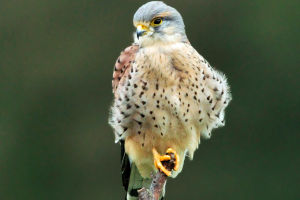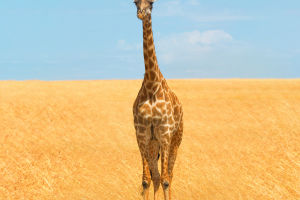Hey Lykkers! Kangaroos are some of the most iconic and fascinating animals in Australia.
Known for their powerful legs, unique hopping movement, and strong tails, kangaroos have perfectly adapted to the diverse and often harsh Australian landscape.
Let's explore the unique ways these incredible creatures survive and thrive in the wild!
The Amazing Hop
One of the most distinctive features of kangaroos is their hopping movement, called "saltation." Unlike other animals, kangaroos don't walk or run. Instead, they leap forward using their strong hind legs. This hopping is not just for show—it's a highly efficient way of moving. When a kangaroo hops, its muscles and tendons store and release energy, much like a spring. This mechanism allows them to easily travel long distances at speeds up to 35 miles per hour (56 km/h) without tiring.
Kangaroos use this energy-efficient movement to cover vast stretches of land in search of food and water, which is crucial in the dry and arid regions of Australia. The tail also plays an essential role, acting as a counterbalance and providing stability during each powerful leap.
Habitat and Adaptations
Kangaroos are found across Australia in various habitats, from woodlands and grasslands to deserts and coastal regions. Each type of kangaroo is uniquely adapted to its environment. For example, the Red Kangaroo, the largest of the species, is commonly found in central Australia's arid and semi-arid zones. Its light-colored fur reflects the sun's harsh rays, and it has the ability to survive on very little water.
The Eastern Grey Kangaroo, on the other hand, prefers the cooler, forested areas of eastern and southern Australia. This species tends to gather in groups, known as "mobs," for added protection against predators.
Another interesting kangaroo adaptation is their ability to regulate reproduction based on environmental conditions. Female kangaroos can delay the development of their embryos until the weather and food supply improve, ensuring that their young have the best chance of survival.
Kangaroo Facts for Kids: Learn About the Amazing Marsupial
Video by KidsMathTV
Social Structure and Behavior
Kangaroos are social animals and often live in mobs, which can range from a few individuals to over fifty. These groups are typically led by a dominant male, known as a "boomer," who defends his position by engaging in boxing-like fights with rival males. During these bouts, kangaroos balance on their tails and kick each other with their powerful legs—an impressive yet dangerous display of strength.
Despite their tough appearance, kangaroos have a gentle side, too. They groom one another, show affection through gentle touches, and even communicate using a range of vocalizations, from low grunts to sharp clicks. Mothers and their joeys share a particularly close bond, with the joeys often seen peeking out from the safety of their mother's pouch.
Surviving in the Harsh Outback
Surviving in the Australian Outback isn't easy. Kangaroos face extreme temperatures, limited food resources, and the threat of predators like dingoes. Yet, they have evolved several strategies to beat the heat and survive in these tough conditions.
When the temperature rises, kangaroos lick their forearms to cool down. This action may seem strange, but it's highly effective. The saliva evaporates and lowers their body temperature, helping them stay cool even in the hottest weather. Additionally, kangaroos are crepuscular, meaning they are most active during the early morning and late afternoon, avoiding the midday heat.
The Kangaroo's Role in the Ecosystem
Kangaroos are more than just iconic animals—they play a vital role in maintaining the health of their ecosystems. As grazers, they help control plant growth and disperse seeds, promoting biodiversity in their habitats. Their movement patterns also create natural pathways that other animals use, making them an integral part of Australia's wildlife.
Lykkers, the kangaroo's unique behavior, powerful legs, and incredible adaptability have made it a symbol of resilience and survival in Australia's challenging environment. From their impressive hopping to their strong social bonds, kangaroos are truly remarkable animals.
So, the next time you think of Australia, remember that these iconic creatures are much more than just hopping marsupials—they are a testament to the wonders of nature!


